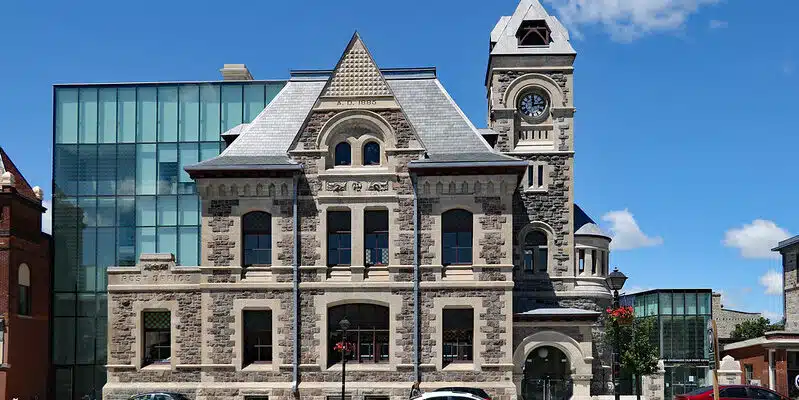Historic homes are treasures that connect us to our past, but they often come with unique challenges, particularly when it comes to maintaining their brick structures. At Fix My Brick, we understand the importance of preserving these architectural gems while ensuring their structural integrity. In this comprehensive guide, we’ll explore five of the most common brick issues encountered in historic homes and provide expert advice on how to identify and address them effectively.
1. Identifying and Addressing Efflorescence
Efflorescence is a common issue in historic brick structures that can be both unsightly and indicative of underlying moisture problems.
What is Efflorescence?
Efflorescence appears as a white, powdery substance on the surface of bricks. It occurs when water-soluble salts within the brick or mortar are drawn to the surface by moisture and then crystallize as the water evaporates.
Identifying Efflorescence
- Look for white, fuzzy deposits on the brick surface
- Pay attention to areas where water tends to collect or seep through
- Note any patterns or recurring appearances after rainy periods
Addressing Efflorescence
- Identify and address the source of moisture
- Clean the affected area with a stiff brush and water
- For stubborn deposits, use a specialized efflorescence cleaner
- Apply a breathable, water-repellent sealer to prevent future occurrences
Remember, while efflorescence itself is not harmful, it can indicate underlying moisture issues that need to be addressed to prevent more serious damage.
2. Dealing with Spalling Bricks
Spalling is a more serious issue that can compromise the structural integrity of historic brick walls if left untreated.
Understanding Spalling
Spalling occurs when the face of a brick chips, flakes, or peels off. This is often due to freeze-thaw cycles, where water enters the brick, freezes, expands, and causes the surface to break apart.
Signs of Spalling
- Flaking or peeling of the brick surface
- Crumbling or cracking of bricks
- Noticeable loss of brick material
Addressing Spalling Bricks
- Remove any loose or damaged material
- Allow the affected area to dry thoroughly
- Apply a breathable, compatible patching material for minor spalling
- For severe cases, consider replacing the damaged bricks entirely
- Address any underlying moisture issues to prevent future spalling
Proper diagnosis and timely intervention are crucial when dealing with spalling bricks to prevent further deterioration of the historic structure.
3. Fixing Mortar Joint Deterioration
Mortar joints play a crucial role in the stability and weather resistance of brick walls. In historic homes, these joints often require special attention due to age and environmental factors.
Causes of Mortar Joint Deterioration
- Natural weathering over time
- Freeze-thaw cycles
- Chemical reactions with pollutants
- Structural movement or settling
Identifying Mortar Joint Issues
Look for these signs of deterioration:
- Cracking or crumbling mortar
- Recessed joints (mortar set deeper than the brick face)
- Loose or missing mortar
- Vegetation growth in joints
Addressing Mortar Joint Deterioration
- Assess the extent of the damage
- Clean out deteriorated mortar to a depth of at least 3/4 inch
- Choose a mortar mix that matches the original in strength, composition, and color
- Repoint the joints using proper techniques to ensure longevity
- Allow proper curing time before exposing to moisture
It’s essential to use compatible materials and techniques when repointing historic brickwork to maintain the structure’s integrity and appearance.
4. Addressing Structural Cracks
Structural cracks in brick walls can be alarming and potentially serious issues in historic homes. Understanding their causes and proper remediation is crucial for maintaining the building’s stability.
Common Causes of Structural Cracks
- Foundation settlement
- Thermal expansion and contraction
- Excessive loads or structural modifications
- Seismic activity
Identifying Structural Cracks
Look for these characteristics:
- Cracks wider than 1/8 inch
- Diagonal cracks, especially those wider at one end
- Stair-step cracks along mortar joints
- Cracks that continue through multiple bricks
Addressing Structural Cracks
- Consult a structural engineer to assess the severity and underlying cause
- Address any foundation issues or other root causes
- For minor cracks, consider crack injection with a compatible material
- For severe cases, brick replacement or wall reinforcement may be necessary
- Monitor repaired areas for any further movement or cracking
It’s crucial to address structural cracks promptly and professionally to prevent further damage and ensure the long-term stability of the historic structure.
5. Managing Moisture-Related Issues in Historic Brickwork
Moisture is often the root cause of many brick issues in historic homes. Proper moisture management is essential for preserving the integrity of these structures.
Common Moisture-Related Issues
- Rising damp
- Penetrating damp
- Condensation
- Inadequate drainage
Identifying Moisture Problems
Look for these signs:
- Damp patches on walls
- Mold or mildew growth
- Peeling paint or wallpaper
- Efflorescence (as discussed earlier)
- Musty odors
Addressing Moisture-Related Issues
- Identify and eliminate sources of excess moisture
- Improve drainage around the building’s foundation
- Ensure proper ventilation, especially in basements and crawl spaces
- Consider installing a damp-proof course for rising damp issues
- Use breathable materials for any repairs or treatments
- Regular maintenance of gutters and downspouts
Effective moisture management is crucial for preventing a wide range of brick issues and preserving the overall health of historic structures.
Conclusion
Maintaining the brickwork of historic homes requires a delicate balance between preservation and necessary intervention. By understanding and addressing these five common brick issues – efflorescence, spalling, mortar joint deterioration, structural cracks, and moisture-related problems – homeowners and preservationists can ensure the longevity and beauty of these architectural treasures.
At Fix My Brick, we specialize in the careful restoration and maintenance of historic brickwork. If you’re facing any of these issues or have concerns about your historic brick structure, don’t hesitate to reach out to our team of experts. We’re committed to providing solutions that respect the integrity of your historic home while ensuring its strength and durability for generations to come.
Remember, early detection and proper treatment are key to preventing minor issues from becoming major problems. Regular inspections and timely maintenance can save both time and money in the long run, preserving the charm and value of your historic brick home.
\n\n\nWhat are common brick issues in historic homes?
The most common brick issues in historic homes include efflorescence, spalling, mortar joint deterioration, structural cracks, and moisture-related problems.
What is efflorescence and how can it be identified?
Efflorescence is a white, powdery substance that appears on bricks as a result of moisture drawing soluble salts to the surface. It can typically be identified by fuzzy deposits on the brick surface, especially in areas where water collects.
How should I address efflorescence?
To address efflorescence, identify and eliminate the moisture source, clean the affected area, and apply a breathable, water-repellent sealer to prevent future occurrences.
What is spalling and what are its signs?
Spalling occurs when the surface of a brick chips or flakes off, often due to freeze-thaw cycles. Signs include flaking, crumbling bricks, and noticeable loss of brick material.
How can I repair spalling bricks?
Repair spalling bricks by removing loose material, allowing the area to dry, and applying a compatible patching material. For severe cases, replacement of damaged bricks may be necessary.
What causes mortar joint deterioration?
Causes of mortar joint deterioration include natural weathering, freeze-thaw cycles, chemical reactions, and structural movement or settling.
How can I identify issues with mortar joints?
Signs of mortar joint issues include cracked or crumbling mortar, recessed joints, loose or missing mortar, and vegetation growth in joints.
How should I address structural cracks in brick walls?
To address structural cracks, consult a structural engineer, address any underlying issues, and for minor cracks, consider crack injection or reinforcement; for severe cases, brick replacement may be necessary.
What moisture-related issues can affect historic brickwork?
Common moisture-related issues include rising damp, penetrating damp, condensation, and inadequate drainage.
What are effective solutions for managing moisture in historic brick homes?
Effective moisture management solutions include eliminating sources of excess moisture, improving drainage, ensuring proper ventilation, and regular maintenance of gutters and downspouts.





